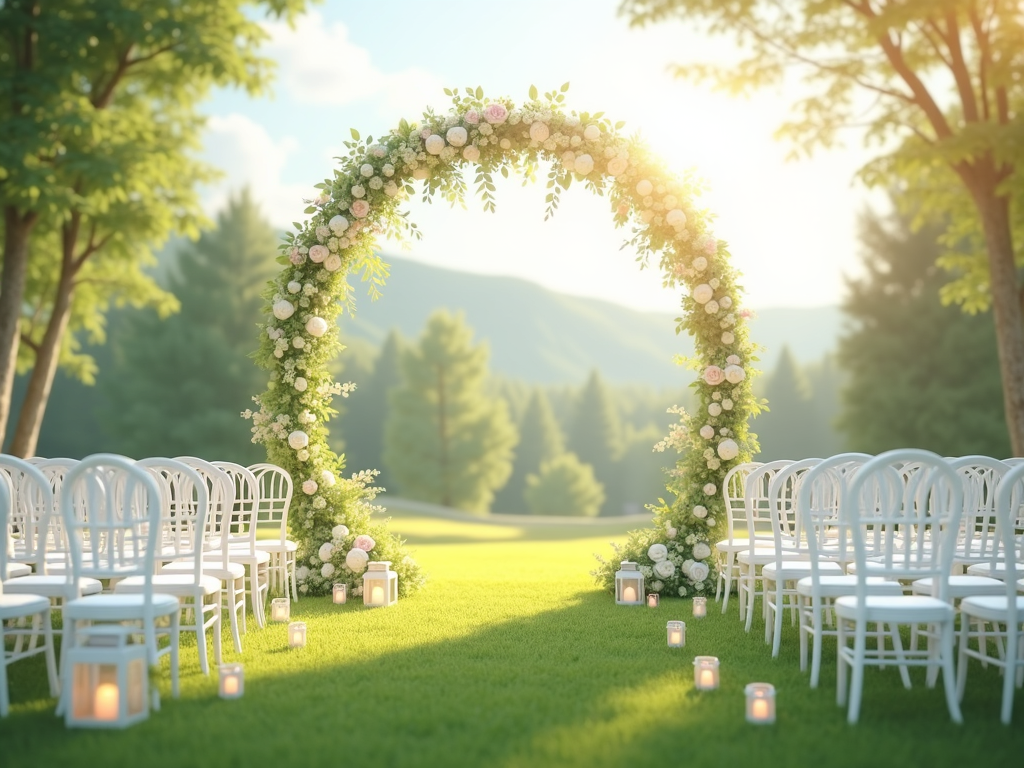Outdoor weddings can be amazing. There’s something about open skies, fresh air, and natural views that makes everything feel more relaxed and personal. But even though they look simple, they take some serious planning. A wedding outside doesn’t come with built-in walls, lighting, or weather protection, so every detail has to be thought through.
A lot of couples choose outdoor venues because they want something different from the usual hall or hotel. But to make it work, it’s important to plan early, stay flexible, and understand what outdoor setups actually need.
Pick the Right Marquee (It Really Matters)
One of the first things to figure out is how you’re going to cover the space. Even if the weather looks good, having some kind of shelter is key. It keeps guests comfortable, protects decorations, and makes the whole day less stressful if the weather changes.
This is where different marquee types come in. Some people go for basic pole tents, while others choose fancier options. One style that’s become super popular for outdoor weddings is Sailcloth Marquee Hire. These marquees aren’t just practical—they look really good too. The fabric is light and slightly see-through, which means it catches sunlight during the day and glows softly at night. It creates a calm, open feeling that fits well with outdoor weddings. Other options work fine too, but sailcloth ones tend to stand out without being too flashy.
The important thing is to choose a marquee that fits the space, the guest list, and the kind of vibe you’re going for.
Weather Isn’t a Small Detail
No matter what the forecast says, weather is always a wildcard. Even in summer, it can rain, get windy, or turn way colder than expected. That’s why having a backup plan is a must. A lot of outdoor venues offer indoor options just in case, but if not, the marquee becomes even more important.
It’s not just about rain either. If it’s too sunny, guests need shade. If it’s cold, heaters might be needed. And if the wind picks up, decorations can blow away unless they’re tied down properly. Planning for different weather types ahead of time means less to worry about on the actual day.
Flooring can also make a huge difference. If the ground is wet or uneven, guests in heels or formal shoes might struggle. Some marquee companies offer solid flooring, which helps keep things safe and comfortable.
Timing Is Everything
Outdoor weddings feel chill, but the timing has to be on point. Think about when the sun sets and how that affects the lighting. If the ceremony starts late in the afternoon, make sure there’s enough light for photos before it gets dark. And when it does get dark, you’ll need extra lighting—not just for looks, but so people can see where they’re going.
Also, check the rules for your venue. Some places have time limits for music or events at night. Knowing those in advance helps avoid last-minute stress.
Power, Toilets, and All the Boring Stuff
The less glamorous side of outdoor weddings is still important. Things like electricity, water, and toilets have to be arranged if the venue doesn’t already provide them. DJs, caterers, lighting—all of them need power. Generators are a common fix, but they have to be set up safely and kept out of the way.
Toilets are another thing people forget about. Some outdoor spots have them, but if not, renting high-quality portable ones is a smart move. It might not be fun to plan, but guests will definitely notice if it’s not handled well.
Decorations Have to Work with Nature
Decorating an outdoor wedding is a bit different. You’re not covering up walls or ceilings—you’re working with the natural setting. That means using the space in a way that makes everything feel connected. Flowers, lights, and simple setups often work better than over-the-top displays.
It’s also important to think about where guests will hang out. Chill-out areas, shaded spots, and a clear path from the ceremony to the food or dance area help everything flow better. When planning the layout, it helps to walk through the space like a guest would and make sure it all makes sense.
Don’t Skip the Sound Setup
Outdoors, sound travels differently. There aren’t any walls to bounce off, so voices and music can get lost in the open space. That means a good sound system is a must. For the ceremony, microphones make sure everyone hears the vows. For the party, speakers need to be spaced out so music doesn’t blast in one area and vanish in another.
Also, keep in mind that some areas have noise rules. It’s better to check that early than deal with complaints halfway through the evening.
Let the Space Speak for Itself
One of the best things about outdoor weddings is how little you really need to add. Trees, hills, beaches, gardens—all of that already looks good. The goal is to add just enough to make it feel personal without taking away from what’s already there.
Things like fairy lights, candles, wooden signs, or natural flowers often do the trick. When it’s done right, it feels effortless—even if a lot of work went into it behind the scenes.
A Few Final Thoughts
Planning an outdoor wedding takes a bit more work, but it’s worth it when the day finally comes together. Having a solid plan, the right equipment, and a good team makes everything go smoother. And when the sun sets and the lights turn on inside the marquee, it all feels worth it.
The space, the sounds, the way people move around—it all feels more free, more relaxed, and somehow more special. It’s not about perfection. It’s about creating a day that feels real, open, and fun.
Whether it’s a small backyard wedding or a big field full of guests, the key is to plan well and be ready for anything. That way, even if the weather changes or something unexpected happens, the day still ends up exactly how it should—full of great memories.

